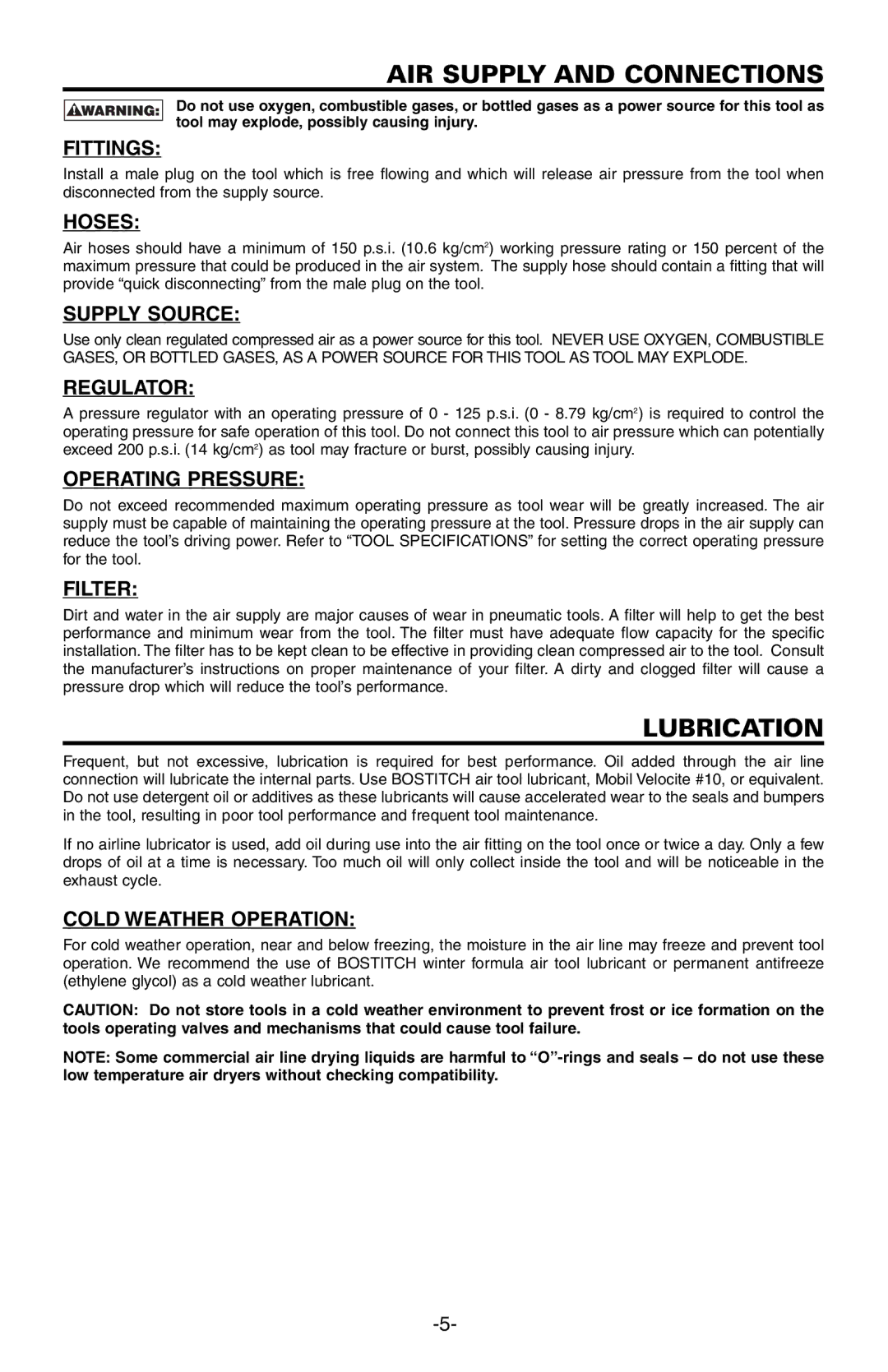N89C specifications
The Bostitch N89C is a highly regarded pneumatic roofing nailer designed to streamline the roofing process while ensuring maximum efficiency and productivity. As a staple tool in the construction industry, particularly for roofing applications, it is engineered to handle a variety of tasks with precision and ease, making it a favorite among both professionals and DIY enthusiasts.One of the standout features of the Bostitch N89C is its lightweight design, weighing in at an impressive 4.6 pounds. This reduced weight allows for extended use without excessive fatigue, which is crucial during long working hours on steep roofs. The nailer is constructed with a durable housing that can withstand the rigors of job sites, ensuring longevity and reliable performance.
The N89C operates using a pneumatic system that delivers a powerful and consistent driving force. It is capable of accommodating wire-weld and plastic collated nails ranging from 3/4 inch to 1-3/4 inch in length, offering versatility for various roofing materials, from shingles to plywood. This adaptability makes it an essential tool for contractors who need to switch between different materials and tasks seamlessly.
Equipped with a depth adjustment feature, the Bostitch N89C allows users to control the depth at which nails are driven, ensuring proper fastening without damaging the roofing materials. This precision is vital for maintaining the integrity of roofs and ensuring longevity. An adjustable exhaust port also enhances user comfort by directing air away from the user, reducing the chance of dust and debris being blown back onto the work surface.
The Bostitch N89C's magazine holds up to 100 nails, enabling contractors to work efficiently without frequent reloading. This feature is complemented by a nail lock-out mechanism that prevents dry firing, which can cause damage to the tool and materials. The easy-to-clear jam release lever also ensures that any jams can be resolved quickly, minimizing downtime on the job.
Incorporating advanced technologies like an efficient air consumption design, the Bostitch N89C promotes longer run times and reduced compressor cycling. This innovation not only improves performance but also contributes to cost-effectiveness for contractors who rely on pneumatic tools for their jobs.
In summary, the Bostitch N89C roofing nailer is a powerful, reliable, and easy-to-use tool built for professionals. With its lightweight structure, adjustable features, and durable construction, it offers the performance needed to tackle roofing projects efficiently and effectively, making it an invaluable addition to any contractor's toolkit.

